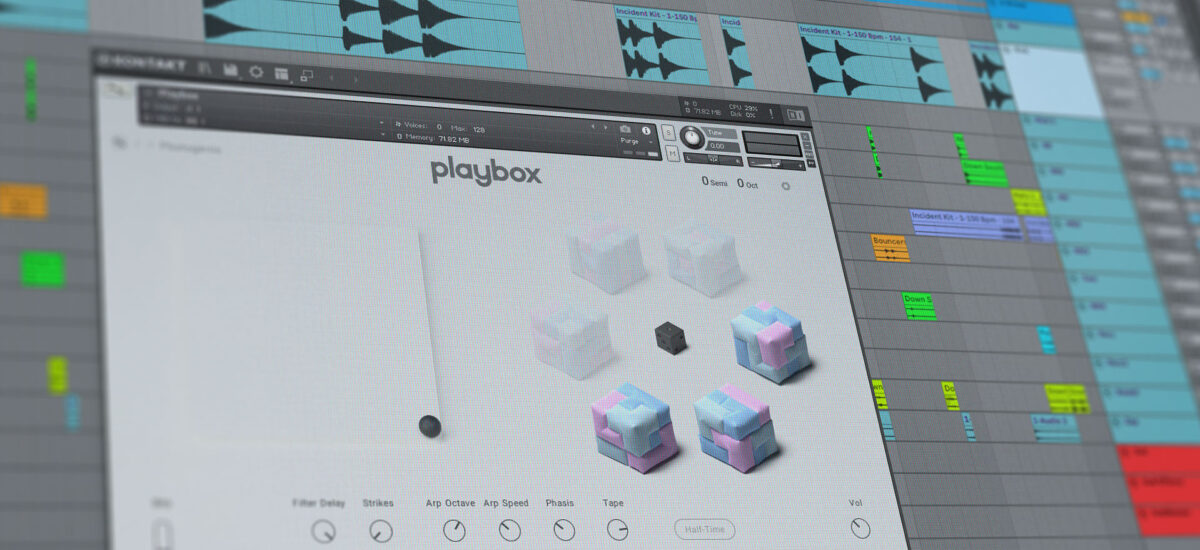
Every producer wants their songs to connect with people on a deep level. Music has the power to do this, and learning how other producers and composers have succeeded at it will give you access to that power.
Pop music is “pop” because it’s popular—which really means that it’s successful at grabbing people’s ears and keeping them hooked into a song. EDM is a genre that has specialized in this, by taking the fundamental elements of dance music (namely house and techno), and infusing it with pop strategies for capturing listeners.
All music, and especially pop music is built using chords and melodies. Every melody is different, but a lot of chords follow similar patterns—this is what we call a chord progression. Chord progressions are the roadmaps we use to build tension and release, flow and moods into a song. They create the foundation for the song and support the melody. Since chord progressions have anchored all of the great pop songs, they are also at the core of every great EDM hit.
So whether you’re looking for EDM piano chords or techno chord progressions, let’s explore some of the most popular EDM chord progressions and how you can use them in your productions.
Jump to these sections:
How do you make good EDM chords?
Making good EDM chords is the same as making any good music—base them on the fundamentals that are used in every great chord progression. Every chord progression uses terminology that is quite simple. Every chord within a certain key is labeled with a roman numeral that designates how far that chord is from the tonic or root of the key. So in the key of C major, the first chord (the “I” chord) is C major. Since the C major scale contains the notes C-D-E-F-G-A-B, the chords in that key follow the same order. We denote the chords relative to their order in that process. I—II—III etc. One trick to note is that some chords in a key are major and some are minor. These are noted by the roman numerals being written in upper case ( III—IV—V) for major chords, or lowercase (iii—iv—v) for minor. This is a great way to use a progression and transpose it into other keys.
Another aspect of making good EDM chords is the type of EDM software and VSTs you’re using to create the chords. There are many EDM subgenres, and taking the time to really listen to the timbre and tonal quality of the instruments, synths, and sounds you’re using can help make your chords stand out.
Let’s look at some of the best chord progressions used on some massive EDM hits. We’ll identify a chord progression, and then show an example of how it was used.
5 Essential EDM chord progressions
1. i—III—VII—VI
Avicii’s “Levels” is one of the biggest EDM hits of all time, and its EDM chords stand out as instantly recognizable. It starts from the tonic chord ( i ) in C sharp minor. This is the center around which the other chords revolve. From the tonic it goes to the major three chord ( III ) of E major, then into the seventh ( VII ) chord of that key, B major, and ramps the tension by pivoting to the six chord ( VI ) which leads right back into the tonic to start our progression all over again.
Let’s try using this progression with some different sounds, to see where it could lead us. We’re going to use PLAYBOX, a KONTAKT instrument that allows you to play with chords and sounds in an innovative way. It’s included in KOMPLETE 14 if you’re interested in trying it.
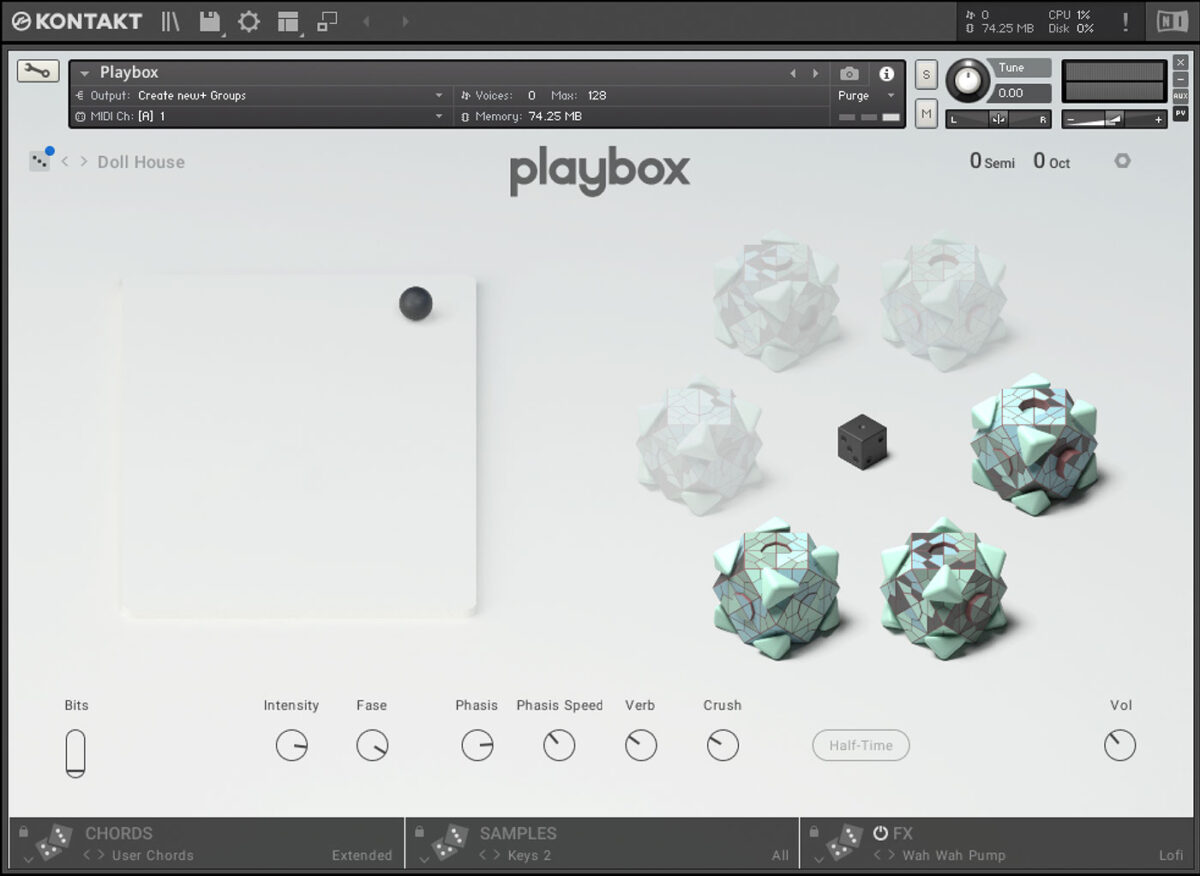
We’ve taken a kick from BATTERY to just keep the tempo, and we’ll drop a MIDI file of our chord progression in there. PLAYBOX lets you randomize the sounds, samples and settings to try out how chords might sound when played together. Just click on any of the dice icons and it will randomly load a new setting. We’ve randomly landed on a preset called Doll House, and then also randomized a few settings in it. Here’s how that sounds.
2. i—VI—iv
Often we are so accustomed to seeing chord progressions in a 4 chord pattern that we forget that sometimes less is more. A three chord pattern can allow the tension of a change to hang before it resolves back to the tonic. Calvin Harris is behind many of the biggest EDM chart toppers, and this chord progression from “How Deep Is Your Love” is one of the best known. The progression is the basis point for the track, even when we don’t hear the chords in the mix. Then, in the moments when the chords arrive, they reveal the way they locked the bass line and melody together. Starting with the tonic in E minor, it shifts to a C major, which is six steps away from the tonic, making it the VI chord. It moves to the slightly less stable fourth degree ( iv ) of A minor, which wants to move somewhere else. But it hangs there for another bar—holding that tension—underlining the question of the song title—before releasing back to the tonic of E minor.
We’re going to try the same process as before, by taking the MIDI of this chord progression, and trying it in PLAYBOX. One thing that PLAYBOX lets us do is adjust different parameters of the patch, even after we’ve randomly selected other aspects. Take a look at which options this instrument gives us under the hood.
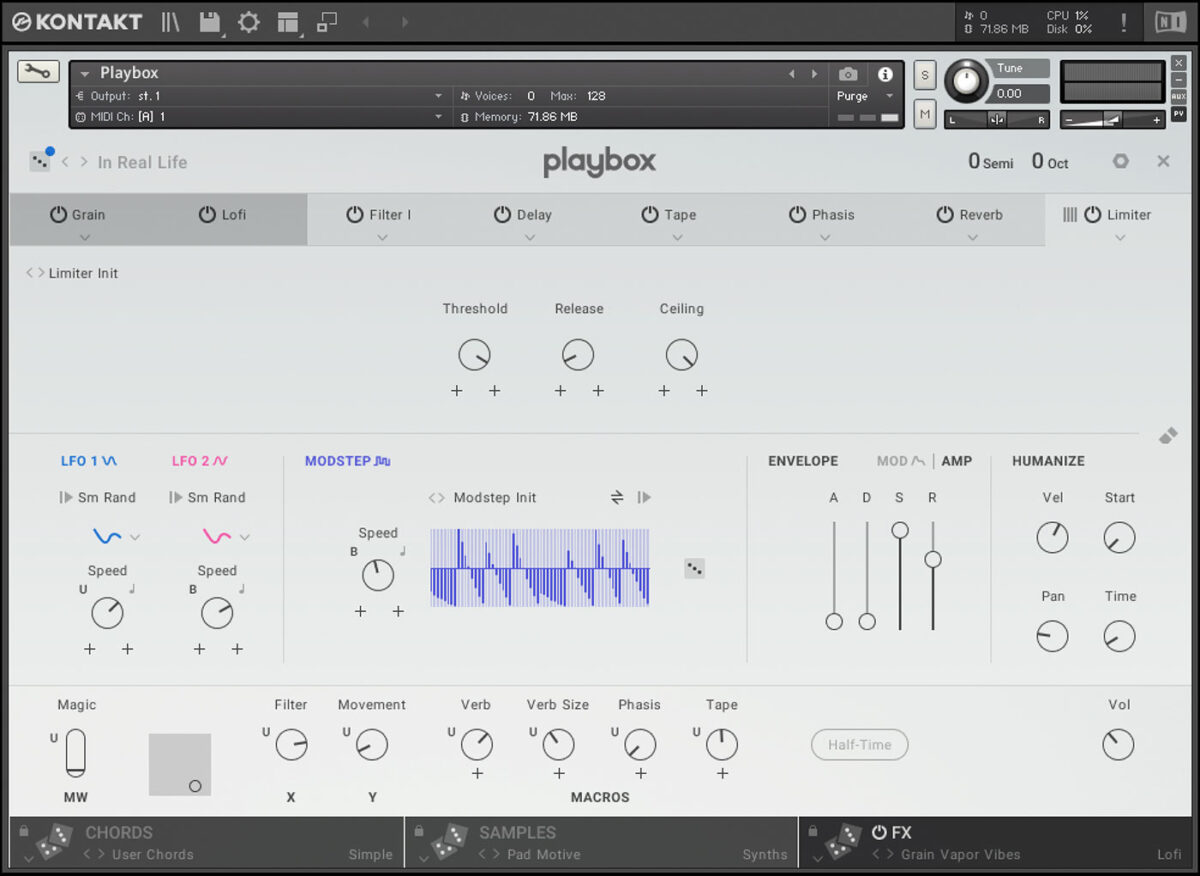
Here’s how the new progression sounds:
3. i—VI—VII
Another EDM progression that uses only 3 chords is from Martin Garrix and Tiesto’s “The Only Way Is Up.” While it has some structural resemblances, they are wildly different songs. This is the beauty of chord progressions. They can be used to whichever result you want. This track has a similar approach to what we just looked at, starting with a minor one chord ( i ), and building the tension with a major six ( VI ) chord. But this goes all the way to the seventh position, as far from the tonic as possible, and then resolves back to the tonic and holds there into the next bar. Because it is in the key of C# minor, it also has a different flavor. The resemblances in structure are completely lost in how different the production and writing are.
To see how those differences are even bigger when we just change a few parameters of our sounds, let’s load this progression into PLAYBOX. We can take our MIDI file and just drag-and-drop it onto the KONTAKT window, and it appears in PLAYBOX. You can see how our three chords are there, with the fourth chord going back to our minor one ( i ) chord. Now, we can simply trigger these four chords with one note from our MIDI keyboard or a piano roll in our DAW.
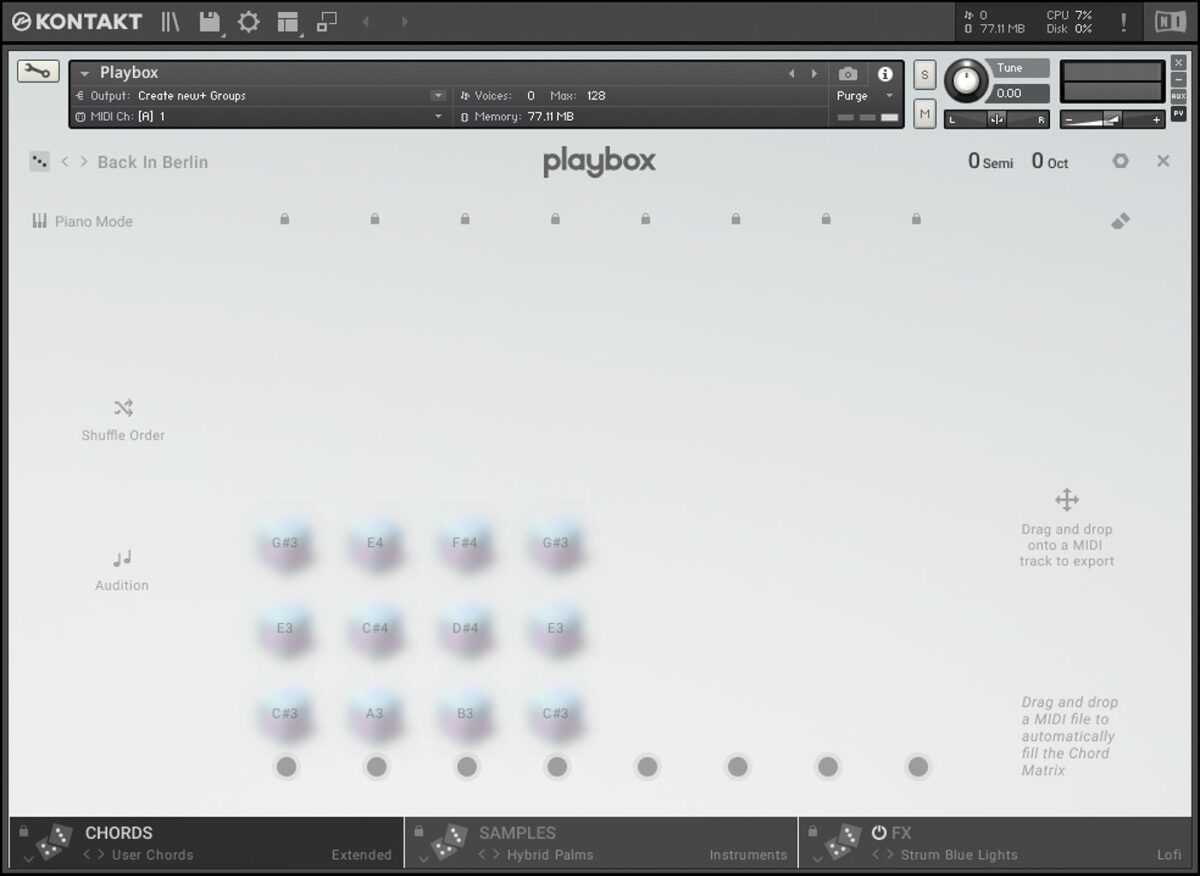
Let’s pick a random patch, and see how it sounds with these chords. Since we want to vary the timing of these chords, we can change our MIDI notes to trigger Playbox a bit differently.

Let’s hear how that sounds:
4. I—V—vi—IV
As we said earlier, EDM uses all the same chords that we find in pop music. These chords work in nearly every genre, and are the framework around many of our favorite songs are built. In fact, there are a handful of chord progressions that have been at the core of so many pop hits, that it’s become an easy target for comparisons. The most famous of these chord progressions is the I—V—vi—IV or 1-5-6-4 progression. This progression has found its way into a ton of big records, and it’s so popular that we’re going to talk about it in the next sections as well.

So let’s take that progression, and put it into Playbox. Here’s how it sounds:
It’s almost magic how easily a C major progression that is nearly identical to so many other famous songs can still feel fresh and compelling.
5. VI—IV—V—I
We looked at a Calvin Harris hit previously, but we’re going to look at another because it is related to our previous progression above. The 1-5-6-4 chords that are the basis of so many pop hits can be rearranged to add different flavors, and they still work. Instead of the progression resolving to the tonic at the beginning, in this case the tonic becomes the end point of the progression. Instead of 1-5-6-4, this progression rearranges them to 6-4-5-1. While that may seem like an insignificant difference, it offers different ways of placing the melody and catching the listeners ear. Another aspect to note is that some people would designate this song as being in C major, while others would say it’s in A minor. Because these keys have all the same notes—they are relative keys. The progression is a 1-6-5-4 in C major, but a 6-4-5-1 in A minor.
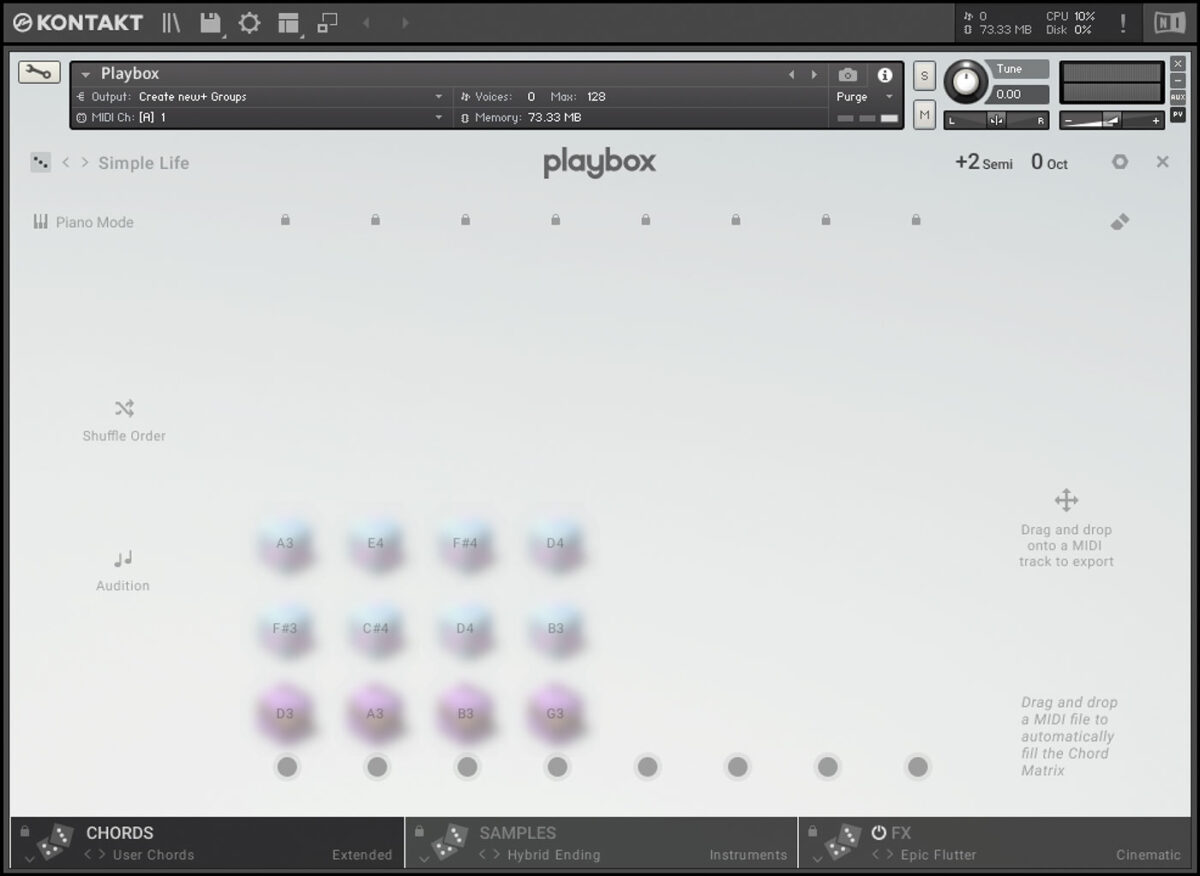
Here’s how our chord progressions sounds in PLAYBOX.
Start using EDM chord progressions
To get the hang of making your own chords, try grabbing this MIDI file. You can load this directly into PLAYBOX, and play the chords in whichever order sounds good to you. Try changing the key signature by shifting the pitch in the upper right hand corner. Go up two semitones (+2 Semi) and then keep moving up, or shift down an octave until you find a key signature you like. Then you can roll the dice and find a good set of sounds to play your chords with.
We hope this introduction to essential EDM chord progressions has given you a better understanding of what chords captivate listeners and how you can use some of these chord progressions in your own music. For even more on producing and writing EDM, check out our electronic music guide, how to write a melody, and how to make house music.















